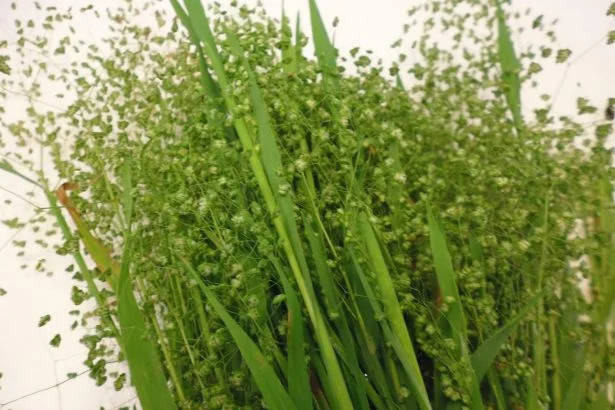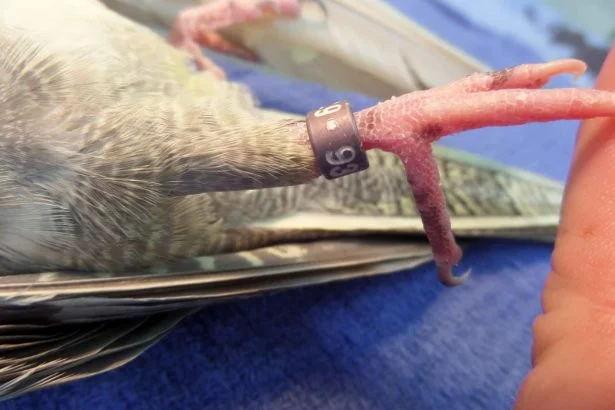Australia, with its diverse landscapes and unique geographical positioning, is home to an array of bird species that are not found anywhere else in the world. Our continent offers bird enthusiasts a plethora of species to admire and study.
In this article, we will delve into the world of Australia’s exotic birds, exploring their habitats, behaviours, and the unique characteristics that set them apart.
Diverse Habitats: A Bird’s Paradise
Australia’s vast and varied landscapes range from the dense rainforests of Queensland to the arid deserts of the Outback, from the coastal regions of New South Wales to the mountainous terrains of Victoria. Each of these habitats is home to specific bird species that have adapted to thrive in these conditions.
Rainforests
Southern Cassowary: In the heart of Far North Queensland’s lush rainforests, the Southern Cassowary reigns as an iconic figure. Their strong legs and dagger-like claws make them formidable creatures of the forest.
Victoria’s Riflebird: Among the rainforest’s most enigmatic residents is Victoria’s Riflebird. This species, named for its iridescent plumage, distinctive courtship display, vibrant blue-black feathers and violet crown.
Paradise Riflebird: True to its name, the Paradise Riflebird is a vision of ethereal beauty. The males display iridescent green-black plumage and elongated tail feathers during courtship dances. Their presence adds a touch of mystique to the rainforest’s depths.
Palm Cockatoo: The Palm Cockatoo is a striking bird known for its dark plumage, massive bill, and red facial skin. These impressive birds are often seen perched high in the canopy, where they use sticks as tools to extract grubs from tree hollows.
Superb Fruit Dove: The Superb Fruit Dove, having vibrant emerald-green plumage, sets it apart from the rest of the species. These doves play a crucial role in seed dispersal as they consume a variety of rainforest fruits, helping to regenerate the forest.
Lewin’s Honeyeater: A melodious presence in the canopy, Lewin’s Honeyeater is a charming bird known for its striking black and white plumage and distinctive yellow patch behind the eye. They play a vital role as pollinators and seed dispersers, contributing to the rainforest’s biodiversity.
Deserts
Mukarrthippi Grasswren: This diminutive bird is a true desert dweller, with a population so scarce that estimates suggest there may be no more than 20 individuals left in the wild. These birds navigate the vast expanses of arid terrain, using their cryptic plumage to blend seamlessly with the sandy dunes and rocky outcrops. Their existence is a testament to nature’s capacity to thrive even in the most challenging environments.
Budgerigar: Commonly referred to as budgies, these small parrots are iconic desert residents. Their vibrant green and yellow plumage contrasts beautifully with the arid landscapes they call home. Flocks of Budgerigars, often numbering in the thousands, navigate the desert skies in search of water and food.
Major Mitchell’s Cockatoo: With its pastel-pink plumage, elegant crest, and white face, Major Mitchell’s Cockatoo is a stunning desert parrot. These birds are often spotted in the arid interior, where they forage for seeds and bulbs.
Spinifex Pigeon: Adapting to life in the arid outback, the Spinifex Pigeon sports intricate patterns along with shades of grey and brown that help it blend into the rocky desert terrain. They are ground-dwellers and forage for seeds and insects.
Zebra Finch: These charming little birds inhabit the deserts and grasslands, donning distinctive black-and-white striped plumage on their chests, reminiscent of zebras. Zebra Finches are highly social and can be seen in large flocks, flitting about in search of seeds and water.
Emu: The emu, a flightless bird, is an iconic symbol of the Australian outback. Towering at up to 6.6 feet (2 metres), these birds possess incredible speed and endurance, making them well-suited to the desert’s unforgiving conditions. They are omnivorous and forage for a variety of foods, including plants, insects, and small vertebrates.
Coastal Areas
Little Penguin: Also known as the Fairy Penguin, the Little Penguin is the smallest species of penguin and thrives in the southern bays and estuaries.
Silver Gull: The Silver Gull, typically known as the Seagull, is a very common sight along the coastlines with its distinctive white and grey plumage and bright yellow bill. These adaptable birds are often seen gliding effortlessly on coastal breezes or scavenging for food near beaches and coastal towns.
Eastern Osprey: A majestic raptor, the Eastern Osprey, graces the coastal skies. Recognizable by its distinctive black eyestripe, these birds of prey are often seen hunting over the coastal waters and nesting on elevated platforms near the shore.
Sooty Oystercatcher: With its jet-black plumage and striking red bill, the Sooty Oystercatcher is skilled at foraging for mollusks, crustaceans, and other tidbits along the coastline, using its sharp bill to extract prey from rock crevices.
Crested Tern: Graceful and agile, the Crested Tern is a seabird that thrives along the coastlines. Their sleek white plumage, distinctive black cap, and slender wings make them a sight to behold as they dive gracefully into the waters to catch fish.
Masked Lapwing: Often seen in coastal areas and parks, the Masked Lapwing is known for its striking appearance, characterised by a black face mask and distinctive spurs on its wings. These birds are highly territorial and known for their distinctive “peewee” calls.
Red-capped Plover: This dainty shorebird boasts a vibrant red cap on its head and is a common sight on sandy beaches, salt marsh and mudflats. They forage for small invertebrates such as crustaceans and molluscs.
Sooty Tern: Occasional visitors to Australia’s coastal regions, Sooty Terns are striking seabirds with black plumage and distinctive white foreheads. They undertake long migratory journeys, often crossing vast ocean expanses before arriving at Australian shores.
Unique Behaviours and Adaptations
Mimicry: The Lyrebird is known for its exceptional ability to mimic natural and artificial sounds from the environment. They can mimic a wide range of natural and artificial sounds from their environment, such as the songs of other birds, the rustling of leaves, and even the mechanical sounds of chainsaws.
Courtship: The Satin Bowerbird’s elaborate courtship behaviour stands as a remarkable spectacle. Male Satin Bowerbirds, adorned with glossy black plumage and iridescent blue eyes, meticulously construct bowers or display areas on the forest floor. These bowers are adorned with a meticulous arrangement of colourful objects, including flowers, feathers, and even human-made trinkets such as bottle caps and shiny coins. The males tirelessly maintain and decorate their bowers to attract females, who meticulously inspect these creations. The courtship dance unfolds as the male proudly displays his treasures, performing intricate dances and vocalisations in the hope of winning the favour of a potential mate.
Nesting: The Malleefowl, a ground-dwelling bird endemic to arid regions, presents a remarkable nesting behaviour that showcases its architectural expertise. These birds construct substantial mounds using sand and organic matter, forming an environment conducive to incubating their eggs. This unique adaptation allows them to regulate the temperature within the mound to ensure the successful development of their offspring.
Migration: The Rainbow Bee-eater, with its vibrant plumage, embarks on an annual migration between the northern and southern parts of Australia. Their migration pattern shows their adaptability in seeking out seasonal food sources. Their diet, primarily consisting of bees and flying insects, requires precision and agility as they snatch them up with precision mid-flight.
Conservation Efforts and Challenges
While Australia is world renowned for its bird diversity, it also faces significant challenges. Urban expansion, habitat destruction, and the introduction of non-native species have threatened the existence of many native birds. As cities expand and land development encroaches upon pristine ecosystems, vital habitats are lost, leaving many bird species with dwindling areas to forage, nest, and thrive. Invasive species, such as feral cats and European foxes, prey on native birds and their eggs, disrupting the delicate ecological balance.
Conservation authorities and organisations are continuously working towards creating awareness and implementing programs to protect these avian wonders. Their efforts include habitat restoration, habitat protection, captive breeding and reintroduction programs, scientific research, and crucially, public awareness campaigns.
In Closing
The exotic birds of Australia are a testament to the country’s rich biodiversity and natural beauty. Their unique behaviours, adaptations, and the challenges they face offer endless avenues for study and admiration. As we continue to research and understand them, it becomes imperative to ensure their conservation and create an environment where they can thrive for generations to come.
FAQs
Australian native birds can be found across the country, from lush rainforests and coastal regions to arid deserts and mountain ranges. Their distribution varies depending on the species and their habitat preferences.
Some native birds are migratory and travel seasonally between different regions of Australia or to international destinations. Migration patterns vary among species.Feeding native birds in your backyard can be done responsibly by offering appropriate bird feed and fresh water. However, it’s important to avoid feeding them human food or anything that may be harmful to their health.
Some native birds such as cockatiels, budgerigars and rainbow lorikeets can be kept as pets but it is not permitted to take them from the wild. If you choose to keep a native bird as a pet it’s important to provide them with the appropriate wild foods including native branches, seeds and grasses.
Some native birds are migratory and travel seasonally between different regions of Australia or to international destinations. Migration patterns vary among species.
Yes, Australia is home to several flightless bird species, including the Emu and the Southern Cassowary.
Yes, some Australian bird species are critically endangered, such as the Orange-bellied Parrot, Western Ground Parrot, and Regent Honeyeater. Conservation efforts are in place to protect these species.
Australian native birds play essential roles in pollination, seed dispersal, insect control, and nutrient cycling, contributing to the health and balance of their respective ecosystems.





